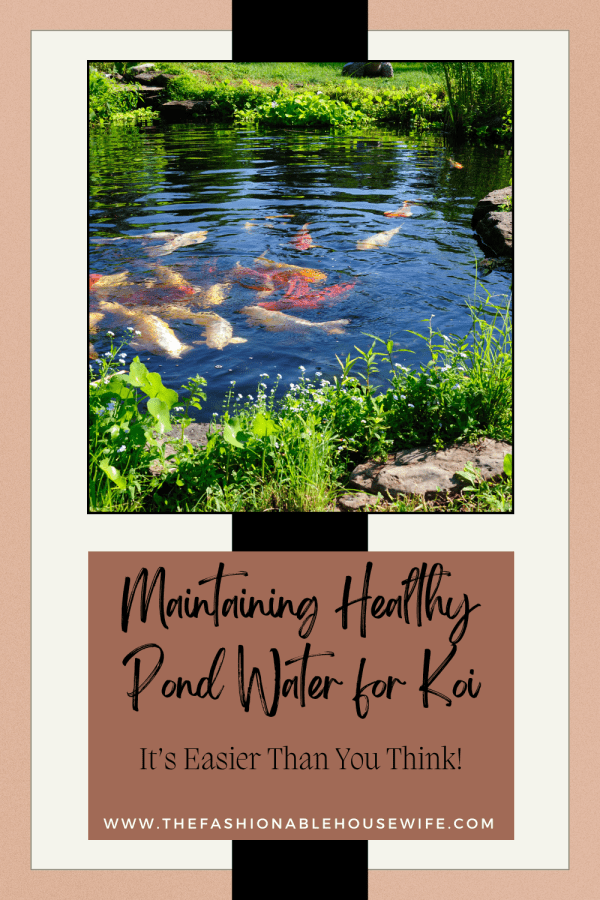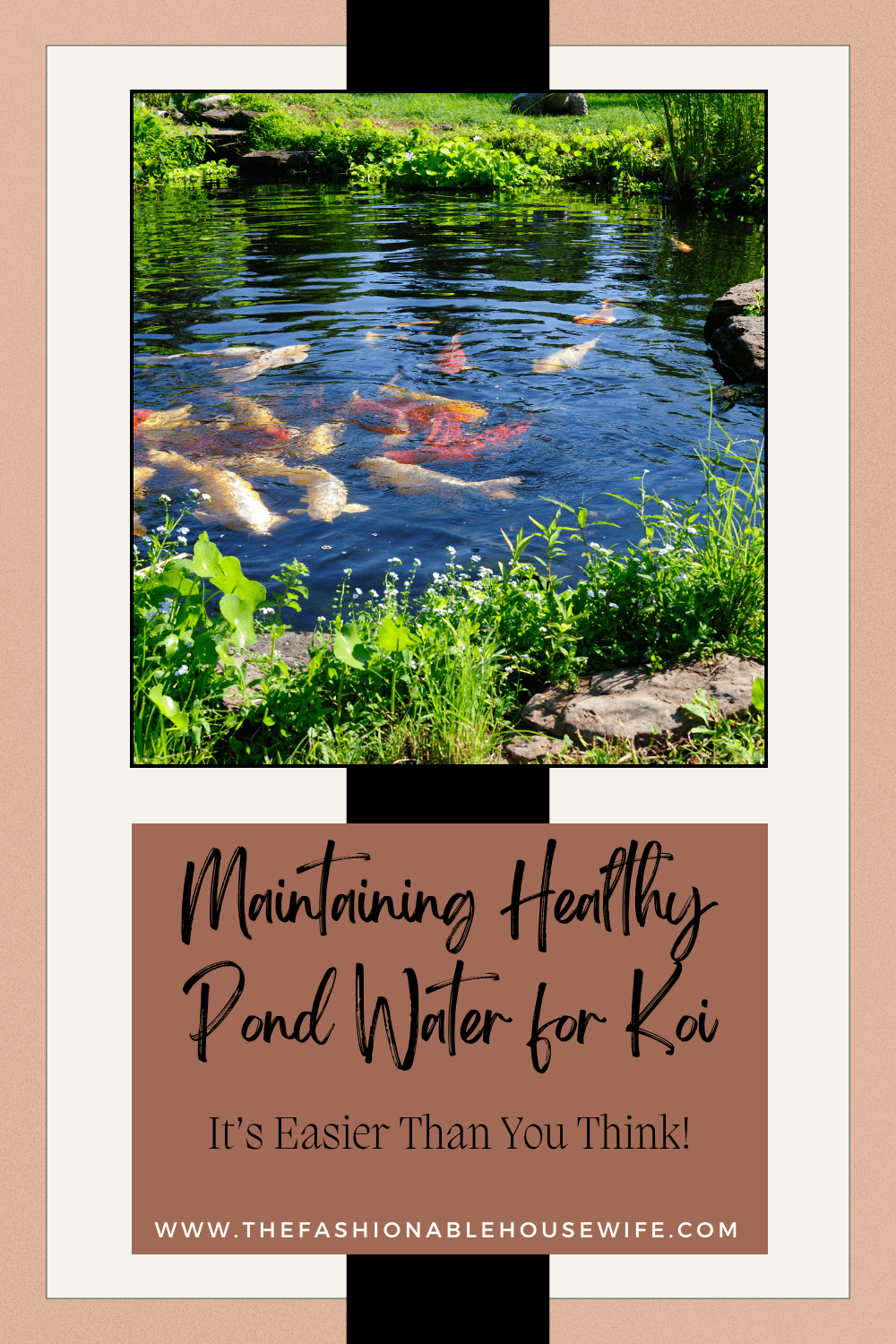Maintaining Healthy Pond Water for Koi

Table of Contents
- Regular Water Testing
- Effective Filtration Systems
- Proper Aeration
- Controlled Feeding Practices
- Managing Aquatic Plants
- Routine Debris Removal
- Seasonal Maintenance
- Monitoring Fish Health
- Conclusion
Koi ponds are tranquil sanctuaries where vibrant fish and lush aquatic plants thrive in harmony. Ensuring your koi remain healthy starts with maintaining the best possible water quality—a balanced environment safeguards your fish from stress, disease, and environmental hazards. For owners looking to enhance their koi pond, understanding the ideal water conditions and necessary care routines is essential. For in-depth best practices, explore resources from Aquatic Gardens, a trusted authority on koi pond health and maintenance.
Optimal water conditions aren’t achieved by chance; they result from ongoing, attentive care. From regular water testing to efficient filtration, each step contributes to the well-being of both the fish and the ecosystem as a whole. Creating an ideal environment not only promotes the health and growth of koi but also enriches the natural beauty of your pond, making it a vibrant focal point in any outdoor space.
Water chemistry, debris management, seasonal maintenance, and the integration of aquatic plants are all interwoven for sustaining a healthy pond. Neglecting one aspect can quickly lead to water quality issues, which can endanger your koi. Thus, a proactive and comprehensive approach is the best guarantee for long-term pond vitality.
Achieving a balance between biological, chemical, and physical factors ensures your pond remains a healthy, thriving habitat. Even small, consistent improvements in care practices will pay off over time, keeping koi active, beautiful, and resilient through the seasons.
Regular Water Testing
Routinely checking your pond’s water quality is a foundation for koi health. Key parameters such as pH, ammonia, nitrites, and nitrates should be monitored at least once a week, with increased frequency during the warmer months when koi are more active and water chemistry can fluctuate rapidly. The Environmental Protection Agency notes that stable pH (7.0–8.5), undetectable ammonia and nitrite, and low nitrates are non-negotiable benchmarks for a safe pond environment. Early detection of imbalances allows for quick corrections, preventing stress and disease outbreaks among your fish.
Effective Filtration Systems
A dual-stage filtration system is vital for maintaining healthy water. Mechanical filtration removes physical debris like leaves or uneaten food, while biological filtration encourages beneficial bacteria colonies to break down toxic compounds into safer substances. It’s essential to clean both water filter types on a regular schedule to avoid clogging and maintain efficient operation. According to HGTV, investing in a high-quality filtration system makes routine maintenance much easier and dramatically improves water quality.
Proper Aeration
Koi require oxygen-rich water to thrive, as do the beneficial bacteria living in your filters. Proper aeration can be achieved by installing air pumps, fountains, or waterfalls, which keep water moving and oxygenated. This prevents stagnation and supports the overall health of your pond’s ecosystem. Stagnant water not only deprives koi of oxygen but also encourages the growth of harmful pathogens and unwanted algae.
Controlled Feeding Practices
Feeding koi is a highlight for many pond owners, but overfeeding leads to excess organic waste, clouding the water, and creating dangerous ammonia spikes. A good rule of thumb is to feed koi no more than they can consume in two to three minutes and reduce amounts as the water cools in autumn and winter. Angi advises that overfeeding can lead to poor water quality, as uneaten food will decay and produce ammonia.
Managing Aquatic Plants
Aquatic plants are a natural ally in the quest for pristine pond water. They utilize waste nutrients, provide vital shade, and limit algae growth. However, an overabundance can reduce oxygen levels at night and contribute to overcrowding. Regular pruning keeps growth manageable, ensures good water circulation, and prevents the depletion of dissolved oxygen, which is crucial for both fish and beneficial bacteria.
Routine Debris Removal
Removing accumulated debris, such as leaves, twigs, and uneaten food, helps prevent decaying organic matter from polluting pond water. This can be managed by skimming the pond surface daily and vacuuming the bottom every week or two. Preventing clogging and buildup ensures higher water clarity, reduces the load on your filtration system, and minimizes the risk of water chemistry issues.
Seasonal Maintenance
Pond care needs to adapt to the seasons. In summer, more frequent partial water changes help keep temperatures stable and algae in check. Fall requires trimming back plants and removing fallen leaves to reduce the organic load. Winterizing the pond might involve shutting down pumps and installing a pond de-icer to allow for proper gas exchange. Spring is the ideal time for a thorough clean, filter replacement, and gradual acclimation of koi to fresh water.
Monitoring Fish Health
Healthy koi are active, alert, and colorful. If you notice symptoms such as clamped fins, erratic swimming, sores, or loss of appetite, investigate immediately. Rapid action is crucial to contain potential outbreaks, whether caused by poor water quality, parasites, or infections. Always quarantine new arrivals and perform regular health checks to preserve a disease-free pond.
Consistently applying these best practices creates a thriving, beautiful habitat where koi flourish for years to come. Good water quality doesn’t just benefit your fish—it brings clarity, vibrancy, and balance to your entire pond ecosystem.
Conclusion
Maintaining healthy pond water for koi is essential to their longevity, vibrancy, and overall well-being. By balancing water quality, monitoring oxygen levels, controlling waste buildup, and providing regular care, pond owners can create a thriving ecosystem where koi flourish. Consistent maintenance not only prevents common health issues but also enhances the beauty and enjoyment of the pond itself. With the right practices in place, your koi can live healthier, more colorful lives in a stable and nurturing environment.

